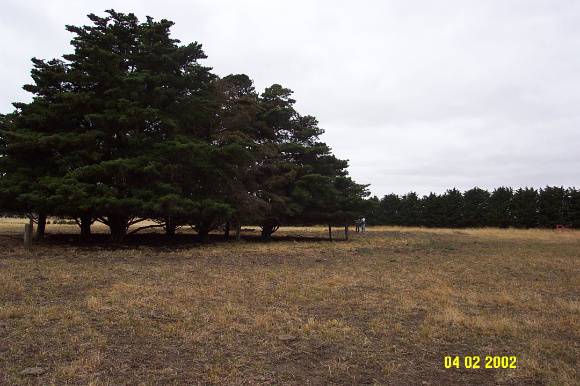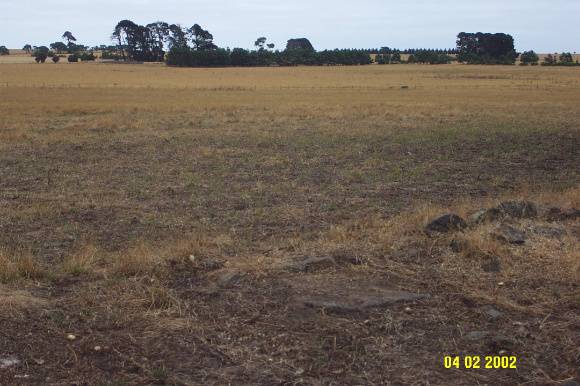| Back to search results » | Back to search page » |
|
HERRNHUT RUINS
LocationDay's Lane and Tobin's Lane PENSHURST, Southern Grampians Shire
File Number81LevelStage 2 study complete |
|
Statement of Significance
What is significant?
Herrnhut was a utopian commune, initially of from 12 to 20 religious dissenters who had migrated from Germany via South Australia and Geelong. It is located about 5.0 kms north-west of Penshurst. It was founded in 1852 by Johann Friedrich Krummnow (1811-1880) loosely following the religious principles of the Moravians, although not officially linked with that denomination, and mixed with other values including mysticism and pietism. The name is derived from Herrn Hut, or the Lord's Watch. There were from 12 to 20 initial members. Krummnow's passion and charisma, despite his unusual even ugly appearance, seems to have been a major factor in the early success of the commune. Pastor C W Schurmann of Tabor and Hochkirk, now Tarrington opposed him. Over the years some communards defected to the larger community. The commune was intended to be self-sufficient with all excess produce sold for its benefit. It appears that, over the years, the commune was very successful in this practical way although markets for its wool, wheat and other produce were limited and distant. One way in which the communards put their religious principles to practical purpose was to support other minorities. These included the local Aborigines, women in distress and homeless or destitute men. People were taken in, housed and fed but they were required to work and pray together with the communards. Various buildings were constructed over the years. These included a house for Krummnow, a communal kitchen and dining room, a dormitory, all of which were located on allotment A of section X (ten) of the parish of Boramboram, and on section IX (nine) a church. There was a cemetery located immediately behind the church. By the 1870s, Herrnhut was increasingly in debt and Krummnow was loosing his absolute hold over the commune. The crisis was averted when it absorbed the members of a similar utopian commune established by Maria Heller at Pine Hills in northern Victoria. Heller eventually defected to the nearby community of Tabor and joined the congregation of Pastor Schurmann. By the late 1870s, Herrnhut was in grave financial difficulty and Krummnow's failure to make a suitable rearrangement of its ownership before he died became an acute problem. A young defector, Louisa Roehr who had married a much older non-German/Lutheran member of the commune, Fred Elmore eventually took command. By April 1889 the communards had agreed to the dissolution of the commune. The Elmores continued to live there by a special arrangement. In 1897 the land was subdivided into smaller farms and sold. The buildings slowly fell into disrepair. The church was demolished and rebuilt as a barn at Sylvan Grove and rare early corrugated iron was recycled at Batesworth, both properties in the district. All that remains at Herrnhut are the scattered ruins of Krummnow's house, the dining room, vestiges of the dormitory and the cemetery. There are two massive Lombardy Poplars, Populus nigra, immediately adjacent to Krummnow's house and Radiata Pines marking the cemetery. The whole property, including both original allotments, has archaeological potential.
How is it significant?
Herrnhut is of historical, social and architectural significance to the State of Victoria and to the Southern Grampians shire.
Why is it significant?
Herrnhut is of historical significance as the first example of a utopian community in Australia with particular links to German immigration as the result of religious persecution. It is of social significance for its association with German immigration, the welfare of oppressed members of the broader community including Aborigines, women and destitute men. It is of architectural significance as a group of buildings displaying a communal way of life using simple technology, local materials and vernacular forms and details.
Group
Religion
Category
Religious housing





